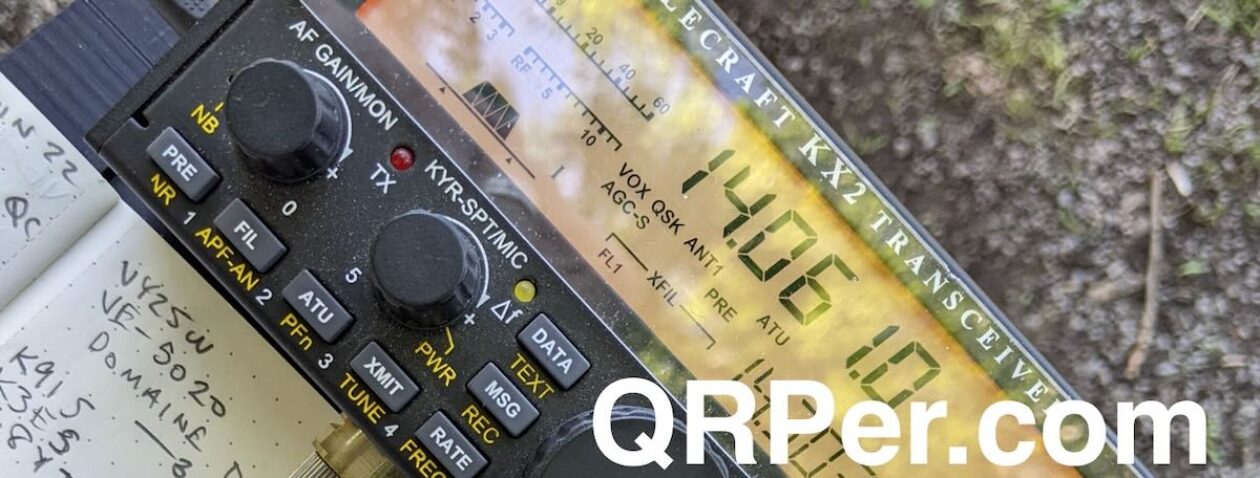by Teri (KO4WFP)
I woke on day four (Wednesday, July 17) of my North Carolina camping and POTA trip, determined for it to be a better day. The three unsuccessful activations were actually a good thing. It put me on notice that I had fallen into my past habit of scheduling to the max. Sometimes I become so focused on whatever I am pursuing that I forget to enjoy the ride getting there. So today would be a day of leisure with some POTA sprinkled in.
I spent the morning drying items wet from the previous night’s rain. It turns out the tent waterproofing was just so-so and that smarted. However, it reminded me of an acronym from Dr. Maika Steinborn – FAIL which stands for First Attempt In Learning. There is a learning curve with any new endeavor and waterproofing a tent is no exception. The rainfly and underside of the tent needed more of the exterior waterproofing spray. That is a project for when I return home.

The camping spot across from me was unoccupied. The parking spaces for it were bathed in sunshine so I took advantage of that sunshine to dry items before packing them up as we had reservations at a new park.
Meanwhile, I endeavored to get the activation for Lake James State Park that the rain prevented last night. To make matters simple, I used the Chelegance MC-750. It was a snap to set up and, while Daisy snoozed under my seat, I set up on 40 meters. The band gave me four contacts in ten minutes. It was a challenge hearing them at times because a park employee was mowing in nearby areas.



I moved to 20 meters and added three more contacts including a park-to-park with Randy N5ILQ at US-11768 in Oklahoma. I’d been on 20 meters for nearly 20 minutes with only three contacts and figured I’d give 40 another try. Switching to 40 meters, that band gave me three more contacts. Getting antsy, I hopped back to 20 meters. Contacts with Tim VA3UZ, Dave N1CGP, and Brian K3ES gave me the breathing room I needed for a valid activation.

Daisy and I packed up and headed out. The road along Lake James was one fun ride, like an old-time rollercoaster with banked turns and zigzags back and forth. I’ve about decided I need to visit North Carolina once a year just to drive the roads!


We drove through Morganton, Lenoir, and then to Blowing Rock, a swanky looking community. We rejoined the Blue Ridge Parkway for a bit before heading north on 221 toward New River State Park. We were in the upper left corner of the state at this point, 357 miles from home.




So far, I’m impressed with the state parks at which I’ve stayed in North Carolina. Lake James offered spacious, well-equipped campsites and one of the nicest bathhouses I’ve seen in a state park. At New River State Park, though, I would live in the lap of luxury as I’d have an electrical hook-up at my site! (To recharge my Jackery Power Station so far, I plugged it into my car while driving.) You appreciate the things we often take for granted in society when you go without them for several days.



After setting up camp and a brief rain shower, I decided to activate New River State Park (US-2748) and, again, use the Chelegance MC-750. Contacts came in spurts. I began with 20 meters and made contact with two stations before moving to 40 meters. Forty meters did not disappoint. Over the course of 25 minutes, I made contact with nine stations including Jeff VE3JZT at park CA-5594 in Ontario province. I had a valid activation by this point with 11 contacts. However, I had the hunger for more QSOs and switched back to 20 meters. That proved to be a good move as I worked four more stations including Scott NB0W in Nebraska before calling QRT.

At this point in the trip, I reflected on the past four days. I had six valid POTA activations and two SOTA activations. Daisy and I had survived camping by ourselves a long way from home negotiating the challenges that arise from this kind of trip. I had a blast driving the roads in my Crosstrek Kai through bucolic countryside and grand vistas. But truth be told, I missed my partner Glenn and was a little homesick. I decided I would end my trip two days early on Friday instead of Sunday. That still gave me two days for another SOTA attempt and two more parks. The fun wasn’t over yet! What summit would I attempt to activate tomorrow? Stay tuned…
Equipment Used
[Note: All Amazon, CW Morse, ABR, Chelegance, eBay, and Radioddity links are affiliate links that support QRPer.com at no cost to you.]









































